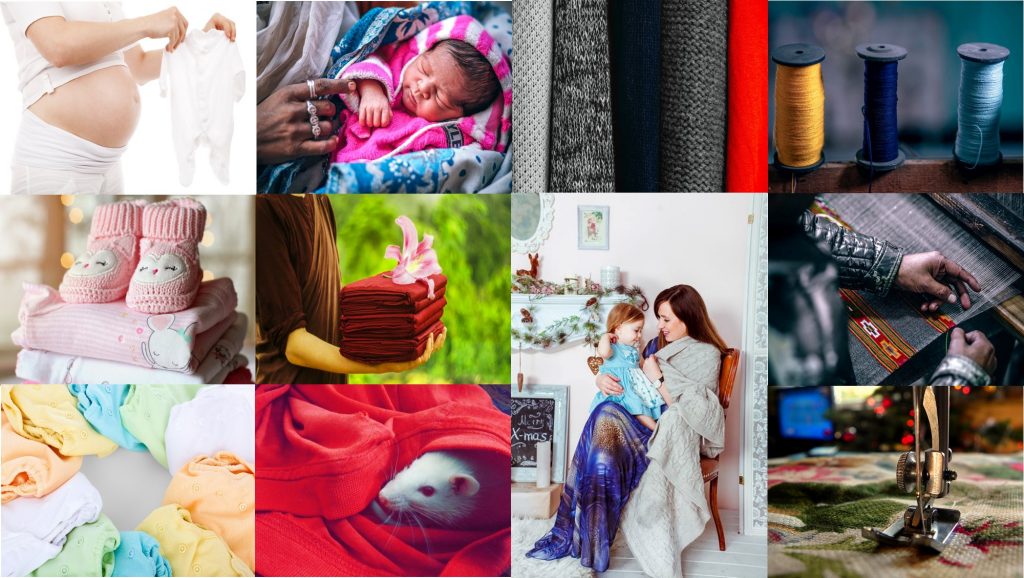Organic clothing certification
Eco-friendly Fabrics
Organic clothing:
Organic clothes are made from organic cotton, silk, jute, Hemp, linen, bamboo, Ramie and wool that has been cultivated or reared according to the guidelines of organic farming. In organic farming, no pesticides, hormones, genetically modified seeds or other chemical are used. This positively affects the environment, agriculture and the health of farmers worldwide.
An organic cloth should be made of the organic material including fibres, textile, thread and dye to qualify for certification as organic.
What is the relation of organic clothing and our health?
As formerly mentioned there is a few important and simple thing that we need to aware of our health and clothing.
Firstly, we need to know the difference between organic and non-organic cotton, silk, jute, Ramie and wool. Cotton and wool are the most usual material that used for preparing textile.
The benefits of organic cotton vs conventional cotton:
Conventional Cotton Farming uses approximately 25% of the world’s Insecticides and more than 10% of the Pesticides (including Herbicides, Insecticides and Defoliants).
The US Environmental Protection Agency categorizes seven of the 15 most common pesticides used on cotton in the year 2000 in the US as “possible,” “likely,” “Probable,” or “known” human carcinogens (Acephate, 1,3-Dichloropropene, Diuron, Fluometuron, Pendimethalin, Tribufos, and Trifluralin).
According to the World Health Organization, 20,000 individuals die of cancer and miscarriages each year in developing countries as a result of the chemicals sprayed on conventional cotton. Farmworkers around the world are suffering from serious health problems relating to an overexposure to hazardous pesticides, including Asthma, Neurological damage and Cancer.
Organic Cotton:
- Organic cotton is cotton that has been grown without the use of chemical pesticides and defoliants according to the organic farming procedure.
- Fertilizers that are used include compost, manure, naturally derived mineral and plant fertilizers and crop rotation. Insect controls involve the use of beneficial insects and natural pesticides certified for organic crops (organic pesticides).
- Organic cotton feels softer, smells cleaner, and is less likely to trigger allergies. The sustainable farming practices used to grow organic cotton do not pollute groundwater, surface water, soil, or air. In fact, soil quality is actually improved by the production of organic cotton.
Organic Cotton farming protects water quality. It also encourages biodiversity by controlling pests with friendly insects rather than multiple applications of toxic chemicals. Organic cotton farming keeps our clothes, workers and environment safer and healthier.
You may consider clothing logos, clothing tags or clothing labels that show GOTS certified cotton used for producing those clothes or fabrics.
Organic Wool:
The organic wool yarn is wool that is from sheep that have not been exposed to chemicals like pesticides and are kept in humane and good farm conditions. OTA identifies “land management, livestock management, scouring processes, spinning processes and dyeing processes” as key factors that determine whether a wool yarn or product can be certified as organic.
In order for wool to be certified organic in the U.S., it must be produced in accordance with federal standards for organic livestock production, which are:
- Feed and forage used for the sheep from the last third of gestation must be certified organic.
- Synthetic hormones and genetic engineering of the sheep is prohibited.
- Use of synthetic pesticides on pastureland is prohibited and the sheep cannot be treated with parasiticides, which can be toxic to both the sheep and the people exposed to them.
- Good cultural and management practices of livestock must be used.
A key point to remember about the USDA and OTA organic wool designations: the organic certification extends only to livestock – it doesn’t cover the further processing of the raw wool.
Wool, as shorn from the sheep, is known as greasy (or raw) wool. Before it is suitable for further processing it must be washed to remove dirt, water-soluble contaminants (called suint), and woolgrease – and there are a lot of these contaminants. This process of washing the wool is known as scouring. Scouring uses lots of water, chemicals (detergents) and energy those are a big concern for the environment.
The surface of wool fibres is covered by small barbed scales. These are the reason that untreated wool itches when worn next to the skin. So the next step is to remove the scales, which also shrink proofs the wool. Shrinking/descaling is done using a chlorine pre-treatment sometimes combined with a thin polymer coating. These treatments make wool fibres smooth and allow them to slide against each other without interlocking. This also makes the wool feel comfortable and not itchy.
Unfortunately, this process results in wastewater with unacceptably high levels of absorbable organohalogens (AOX) – toxins created when chlorine reacts with available carbon-based compounds. Dioxins, a group of AOX, are one of the most toxic known substances. They can be deadly to humans at levels below 1 part per trillion. Because the wastewater from the wool chlorination process contains chemicals of environmental concern, it is not accepted by water treatment facilities in the United States. Therefore all chlorinated wool is processed in other countries, then imported. There are new chlorine free shrink/descaling processes coming on the market, but they’re still rare.
Finally, there is the weaving of the yarn into fabric – and all the environmental problems associated with conventional weaving and finishing. In addition to the environmental concerns associated with conventional weaving, dyeing, and finishing, wool is often treated for moth and beetle protection, using pyrethroids, chlorinated sulphonamide derivatives, biphenyl ether or urea derivatives, which cause neurotoxic effects in humans.
In the last 10 years, the textile industry, along with animal ethics groups like People for the Ethical Treatment of Animals, have lobbied against the wool industry, taking a stand against unethical treatment of sheep. In 2004, U.S. retailer Abercrombie and Fitch became the first to sign on to an animal rights campaign boycott of Australian wool that stood firmly against the typical practices of mulesing (where folds of skin around the sheep’s anus are cut off with shears during the wool shearing) and live export of sheep to halal butchers when their wool production becomes minimal. Other companies such as H&M, Marks & Spencer, Nike, Gap, Timberland, and Adidas (among others) have since joined, sourcing wool from South Africa or South America (where mulesing is not done). The result of this outcry has led to the increased production of both organic and ethical wool, though it is still relatively minor when compared to the overall global wool production.
Each country maintains their own standards for “organic wool” – Australia, for instance, has no equivalence or agreement with US organic standards. The International Wool Textile Organization (IWTO) has adopted a new organic wool standard (closely aligned with GOTS) which they hope will be accepted by its members. In addition, many companies use the term “eco wool”, which means the wool is sheared from free-range roaming sheep that have not been subjected to toxic flea dipping, and the fleece was not treated with chemicals, dyes or bleaches – but this is wide open to interpretation and exploitation. According to the IWTO, “Eco wool” must meet the standards set by the EU Eco-label.
So if you can find organic wool that the term “organic” covers:
- Management of the livestock according to organic or holistic management principles
- Processing of the raw wool, using newer, more benign processes rather than harmful scouring and descaling chemicals; and wastewater treatment from scouring and processing
- Weaving according to Global Organic Textile Standards (GOTS).
But first, you have to find it. And that means you’ll have to ask lots of questions because there are lots of certifications to hide behind.
Reference: https://oecotextiles.wordpress.com/2009/08/11/what-does-organic-wool-mean/
So, if we choose to use organic clothing we help our planet to stay safer place for our next generation even if, the clothes not fully organic or “made with organic cotton/wool”

